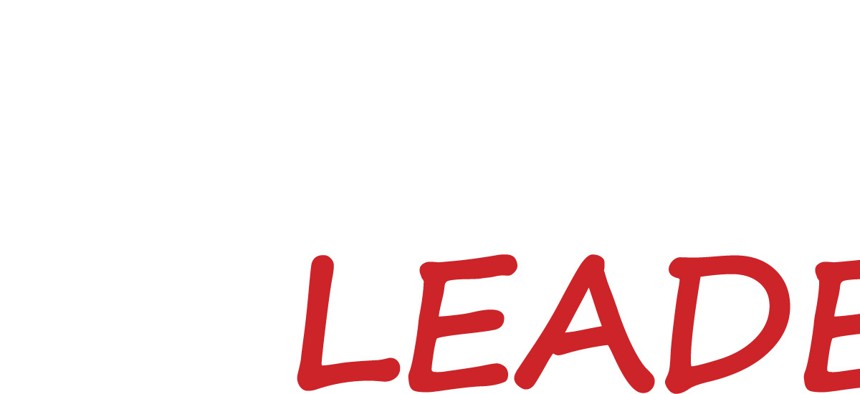
Image via Winui/Shutterstock.com
A Three Point Plan for Injecting Leadership into Government
There is no quick fix to developing better leaders, but here's where we can start.
Government agencies are facing unprecedented challenges to do not just more with less, but to do much more with much less. Meeting these demands requires superior leadership, but what is the government doing to identify and retain the leaders needed to navigate this crisis?
If the feedback from the latest Federal Employee Viewpoint Survey is any indication, the answer is “not much.” Unfortunately, there is no magic bullet for improving government leadership. A more comprehensive approach is needed for lasting change. Research and best practices point to a 3-point plan to inject leadership into government:
Select for potential, not just past performance
We all know that new leaders are often selected based on their performance in individual contributor roles and not for their leadership skills. But performance in one role does not always predict success in another. According to a recent study by CEB, only 29 percent of high performers are also high potentials. Put another way, up to 71 percent of high performers who are promoted are at risk of underperforming at the next level because they lack the potential to succeed.
How do we spot leadership potential? It’s a matter of assessing ability, agility, and aspiration:
- Ability – the intellectual capacity to solve problems and make well-reasoned decisions and the interpersonal and communication skills needed to get work done through others
- Agility – the willingness and ability to learn from experience, admit mistakes, experiment with new approaches, and rapidly adapt to change
- Aspiration – the motive to lead others, the courage to take risks when needed, and the persistence to keep driving for success in the face of challenges
What can agencies do to improve leadership selection right now? Start by examining the criteria used in your current promotion process. Does the process evaluate a candidate’s ability, agility, and aspiration? If not, inject these criteria into promotion panel reviews.
Review their past experiences to look for indicators of ability (such as experience leading a team to accomplish a difficult goal) and agility (adapting rapidly to new challenges). In interviews ask questions about the candidate’s reasons for pursuing a leadership role. Do they show a sincere passion for leading others and a willingness to put in the effort and persistence needed to work through organizational challenges? Or are they interested mainly in their own career advancement? If the latter, they are likely to struggle in a leadership role.
Beyond panel reviews and interviews, consider implementing a valid and reliable assessment program. Assessments can support Merit Principles by providing an equal opportunity for all qualified candidates to be evaluated objectively against a common standard.
Make your development match reality
Training is a critical part of leadership development, but the oft-quoted development literature reminds us that most learning (about 70 percent) occurs on the job, while only about 10 percent comes from traditional classroom training. However, traditional training approaches garner the majority of training dollars and focus. Instead shift the emphasis from formal training to developing through experience and reinforce the behaviors that matter.
The critical behaviors that all leaders must master include
- Ensuring employees understand the mission and how their work supports it
- Setting clear expectations and providing ongoing feedback
- Developing employees through experience
What can agencies do to get started? Establish the right habits early by getting the leaders of new leaders engaged in providing hands-on coaching and guidance. Encourage regular check-ins between leaders and their managers to reinforce these behaviors. In the long term consider implementing a quick pulse survey to evaluate the frequency of key behaviors and hold leaders at all levels accountable for demonstrating them.
Understand the power of context
Put a good leader up against a bureaucratic and ineffective system, and the system will win every time. Rigid policies and procedures can stymie creativity and innovation. Organizations need to take a hard look at how work gets done and identify and eliminate the policies and procedures that impede rather than facilitate performance. This requires the courage to challenge the status quo, question assumptions, and vanquish sacred cows along the way.
What can agencies do to create a more supportive environment? Ask employees to identify the one practice or policy that is most hindering their performance. Determine what is absolutely required by law or statute. Often agencies end up doing much more then they need to simply because they have layered their own cumbersome requirements on top of external regulations. Carefully examine everything that’s not absolutely required by law and ask: does the benefit of this activity clearly outweigh the time and cost involved? If the answer is no, eliminate it.
With government agencies being asked to do more with less, taking the time to incorporate these small steps now can lead to bigger improvements over time. There is no quick fix to developing better leaders but in using this 3-point plan the government will be able to identify and retain leaders for the long-term.
Dr. Rose Mueller-Hanson is the Manager of the Leadership and Organizational Consulting group at PDRI. Her areas of expertise include leadership development; performance management system design, development, and implementation; training needs analysis, design, development, and delivery; competency modeling; individual and organizational assessment; and organizational development.
(Image via Winui/Shutterstock.com)






